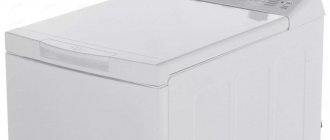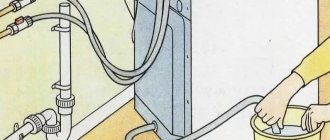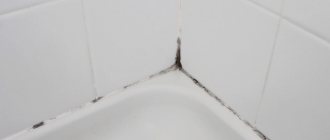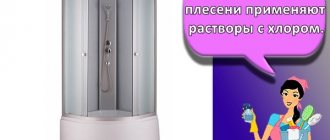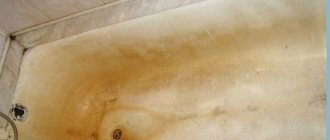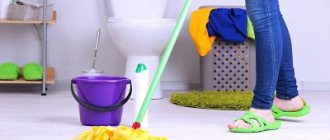The washing machine includes parts made of metal, plastic, glass and rubber. Microorganisms are capable of multiplying on each. In addition, hard water causes scale deposits. All this shortens the service life and degrades the quality of washing. To disinfect a washing machine, you can use traditional methods or ready-made gels, powders, tablets.
Main stages
The washing machine disinfection procedure consists of the following steps:
- external cleaning;
- washing filter elements;
- descaling;
- removal of mold formations and unpleasant odors;
- cleaning from microorganisms.
Washing and removing dirt from the outside
Dry the machine with a soft cloth that absorbs water well. You can use liquid soap as a cleaning agent. Remove any remaining soap solution with clean water. Wipe the device with a dry cloth after cleaning.
See also
How to properly and quickly clean a shell and the best methods at home
Washing filters
Unscrew the drain filter, first placing a thick cloth under it. Wash it with heated water. If the dirt is not washed off, place the filter in a glass/plastic container for 3-4 minutes and pour in Domestos.
Descaling
It is possible to remove scale as follows:
- Pour 150 grams of citric acid into the powder compartment.
- Set the longest wash cycle at a temperature of about 92 degrees.
- Start the cycle.
Cleaning from mold and odor
Boiling is a simple and quick method of killing mold and eliminating unpleasant odors. When the water is heated to a temperature close to 100 degrees, the machine will be cleaned of mold formations. Activate the “boil” mode and start the cycle.
Disinfection from germs
It is possible to disinfect the device from germs using any of the following methods:
- Pour 200 grams of citric acid into the powder compartment.
- Pour 350 milliliters of table vinegar into the drum.
- Mix acetic acid in equal proportions with chlorine bleach and pour into the powder compartment.
- Mix 50 grams of soda with 50 milliliters of water, pour the solution into the cuvette. Pour a couple of glasses of vinegar into the drum.
Why do you need to disinfect your washing machine?
Disinfection (disinfection) – measures aimed at destroying pathogenic microorganisms, as well as toxic compounds at objects in order to prevent them from getting on the skin and inside the human body.
According to studies, washing clothes, mainly at low temperatures and with gentle detergents, does not lead to the destruction of infectious agents. Bacteria, on the contrary, begin to multiply and spread to other places in the washing machine. It is especially dangerous if they get in and remain on towels, diapers, bed linen, underwear, and other things that come into contact with the body. It is possible that parasites can be transferred from wet underwear to hands and then into the oral cavity.
The appearance of mold is the result of non-compliance with the rules of care for household appliances. Active reproduction of mold fungi is observed at elevated humidity and temperature, which leads to the appearance of dark spots. In addition to the unpleasant odor of washed laundry, mold produces a toxic substance - a mycotoxin, which, when it enters the body, causes a threat:
- irritation and itching - when on the skin;
- cough, shortness of breath - in the respiratory system;
- flatulence, diarrhea, constipation - in the gastrointestinal tract;
- weakening of attention and memory - in nerve cells that enter through the bloodstream.
After each wash, it is necessary to wipe the drum with a clean, dry cloth, remove any remaining moisture from the rubber seal, rinse and wipe dry the detergent tray.
To evaporate excess moisture and prevent unpleasant odors, keep the loading hatch and powder receptacle open for an hour after washing.
It is recommended to disinfect an automatic washing machine at home once every 2-3 months, as well as when mold is detected or foreign odors appear. The procedure involves cleaning the external and internal elements of the device.
Review of professional products
Of the professional disinfection products, the most effective are:
- Dr. Tan Antibacterial;
- Dr. Beckman;
- SANDOKKAEBI;
- Multidez-Teflex.
Dr. Teng Antibacterial
This product allows you to remove scale from your washing machine and disinfect it. Promotes quick and effective removal of lime from the drum and heating element. The product contains no acids, therefore, the elements of the machine, which are made of metal/plastic/rubber, will not break.
Dr. Beckman
The liquid product Doctor Beckman has a bluish color and has a specific odor. It includes:
- tenside neitones;
- flavoring;
- hexylcinnamal.
The cleaner in powder form has a slightly different composition:
- zeolites;
- oxygen-based bleach;
- flavoring;
- limonene;
- hexylcinnamal.
See also
30 ways to clean a frying pan from carbon deposits at home
Dr. Beckman provides:
- protection of metal parts of the machine from corrosive effects;
- elimination of large contaminants;
- elimination of mold formations in the drum, heating element, pipeline;
- extension of the operational period.
SANDOKKAEBI
This Korean product allows you to clean the drums of washing machines with vertical/front loading. The product is good at removing hard water deposits. It is sold in half-kilogram packs.
Multidez-Teflex
This disinfectant is made in the Russian Federation. It has an antimicrobial effect and also destroys viruses. On surfaces treated with it, an almost invisible film is formed, which provides a residual antimicrobial effect. Multidez-Teflex does not provoke corrosion of metal parts.
Extending the service life of the machine
Manufacturers promise that the machine will last at least 5-7 years. But with skillful handling and compliance with all operating rules, the machine will work even longer. And systematic preventive cleaning must be given paramount importance. But other activities are no less important:
- soften the water with each wash by adding special products;
- carefully check all pockets to prevent small items, paper, and jewelry from getting into the tank and drum;
- do not overload the drum with things, remembering the maximum permissible loading weight;
- for regular washing, choose modes with water heating less than 90 degrees; with frequent use of high-temperature programs, the machine becomes vulnerable to breakdowns;
- use special mesh bags for washing items with metal elements, faded woolen items and shoes;
- control the washing process in order to promptly respond to leaks, uncharacteristic knocking or grinding sounds;
- After each wash, wipe the drum and rubber seal dry;
- leave the hatch door and tray open to ensure free passage of air inside the housing;
- clean the garbage filter at least once a month;
- run an “empty” wash if you do not plan to use the machine in the near future.
Careful handling of electricity is also of particular importance. Thus, it is strictly forbidden to turn off the machine by unplugging the cord from the electrical outlet, otherwise it is easy to damage the control board. Ideally, you should connect a voltage stabilizer to the machine to eliminate voltage drops that adversely affect the unit system.
The presence of dirt, mold and bacteria in an automatic washing machine has a bad effect not only on the quality of washing, but also on the health of its owners. Domestos will allow you to quickly and effectively overcome all accumulated troubles, but only with strict adherence to safety rules.
What modes will help during the washing process?
Washing at elevated temperatures itself already disinfects the machine. Most microbes die at temperatures above 60 degrees.
So, for disinfection, you can activate the “synthetic 60” or “cotton 60” mode. This will get rid of dust mites and other microorganisms.
“Antibacterial” mode is provided in modern machines. With it, the water is heated to 80 degrees, the set temperature is maintained for at least 20 minutes.
Causes of mold in the washing machine
There are many reasons why a washing machine becomes infected with mold. But almost always the owners of the unit are to blame for the increased proliferation of fungus because they do not follow the rules for caring for household appliances.
As mentioned above, mold can grow and multiply rapidly only in appropriate conditions. Ideally, this is 90% humidity and 20 °C temperature. Small deviations from these indicators are also quite acceptable for microscopic fungi.
In the bathroom, the washing machine will always be in a damp, warm atmosphere. If possible, it is better to immediately install the machine in another, drier room
In a person’s home, such conditions are maintained in the bathroom all year round, so installing a washing machine here is extremely undesirable.
For this purpose, a kitchen or hallway is more suitable. If there is no choice and installation is possible only in the bathroom, you should definitely take care of good ventilation.
Moisture remains on the cuff, inside the tank and on other parts of the unit at the end of the washing process of the loaded laundry. She needs to be given time to evaporate, leaving the door open for these purposes.
As a result, drops of water remaining inside the machine after washing create excellent conditions for the life of mold fungi.
At the end of the wash, a certain amount of water almost always remains in the folds of the rubber cuff, which acts as a seal for the door. Gradually it will evaporate, which is guaranteed to provide high humidity inside the machine. This is exactly what mold spores need to grow rapidly.
In order to save energy, owners constantly wash in low-heated water. This is fraught with the fact that the components of the washing machine are not disinfected at high temperatures.
Using programs with modes of 60 °C and above causes the development of fungi to stop and their death. Lower temperatures only promote their development
However, it is not at all necessary to constantly use these detergents. Alternating through 3-4 washes with regular powder is enough.
With modern detergents containing bleach, it is not necessary to wash only pure white laundry. Some colored items will not fade when washed using the above powder.
Another possible cause is improper washing with fabric softener. When washing with conditioner, be sure to run an extra rinse.
If this is not done, again for reasons of economy or simply due to ignorance, particles of rinse aid remain on the door, in the folds of the rubber cuff, on the drum mesh and the walls of the tank. This breeding ground is perfect for mold growth.
Mold in the washing unit can be caused by improper connection to the sewer system. As a result, the water does not drain correctly and some of it remains inside the machine.
Stagnant, dirty water is the best way to promote the development of mold colonies.
To correctly connect the washing machine to the sewerage system, it is advisable to use the manufacturer’s recommendations for self-installation or invite a specialist
Consequences of dirt accumulation
Operating a washing machine without regular cleaning is fraught with very unpleasant consequences.
- an unpleasant odor is felt not only from the “bowels” of the device: ignoring the problem leads to the fact that washed items lose their freshness, which is replaced by a strange “aroma”;
- scale begins to form much more intensively, and a large amount of it can provoke various breakdowns and malfunctions of household appliances;
- mold appears inside the machine, causing allergies and skin diseases in children and adults with weakened immune systems;
- the remains of powders and liquid products inevitably accumulate on the elements, to which particles of various debris immediately stick;
- Dirt and sand accumulate in the hoses and filters, so the unit gradually becomes clogged.
Restoring yellowed plastic
Over time, most white plastic cutlery will turn yellow. And the washing machine body is no exception. It is possible to return it to its former whiteness, and there are several ways to do this:
- Take 2 tbsp. washing powder, 2 tbsp. baking soda. Pour in 1 liter of water and stir. Apply the resulting mixture to the yellowed areas and leave for a couple of hours. Then rinse with warm water.
- Second way:
- Apply a few drops of ethanol alcohol to a cotton pad. Wipe the plastic thoroughly;
- moisten a clean rag with vinegar essence and treat the car;
- Purchase a spray to restore the whiteness of plastic surfaces from a specialized auto store.
Cuff
A detail that allows the door to close tightly and prevent water from leaking out. The cuff is moistened with a damp cloth and wiped dry after each wash.
If the elastic band has already become very dirty due to infrequent care, wash it carefully. You should be careful with aggressive detergents: they will damage the elastic.
Washer cuff
Voting by our readers
What would you choose or recommend?
"Dr. Beckmann" for washing machines
50.00 % ( 2 )
"Sandokkaebi" for washing machines
0.00 % ( 0 )
"Magic Power-023" for washing machines
0.00 % ( 0 )
"Topperr 3203" from scale
25.00 % ( 1 )
"Kristall-fix" for large household appliances
0.00 % ( 0 )
"Nagara" for washing machines
25.00 % ( 1 )
"Luxus Professional" for washing machines
0.00 % ( 0 )
Are certain types of tissue more susceptible to the virus than others?
How long the virus lasts depends on the fabric, as some materials are more porous than others.
The researchers believe that the fibers in the porous material trap virus particles, dry them and break them apart, and make smooth surfaces such as leather and vinyl easier to clean.
It is believed that synthetic materials like polyester may retain germs longer than breathable cotton-based fabrics, so synthetic outerwear, underwear and dresses should be thoroughly washed.
As information and research related to COVID-19, the disease caused by the coronavirus, continues to evolve, research on it tells us the ability of the virus to remain on surfaces such as cardboard, steel, copper and plastic, door handles and high-traffic areas.
Some viruses can remain active after two to three days on plastic and stainless steel, 24 hours on cardboard and four hours on copper. And most likely, some of the clothing details such as buttons, zippers, etc. can be made from these materials.
Bleach and high temperatures
Cleaning the interior of your washing machine from mold is just as important as cleaning the exterior of your household appliance. However, this is not so easy to do, since in most cases you have to disassemble the device completely
For a non-professional, this is not an easy task that requires certain costs.
To clean the device, you need to pour bleach and other chlorine-containing products with an antibacterial effect into the receiving compartment. Then we select the longest mode with the maximum temperature.
There is no need to put anything in the laundry compartment - it should remain empty. We start the wash and wait for the procedure to complete.
After the water is completely drained, you should turn on the rinse mode, without adding chemicals. When it comes to completion, wipe the drum with a rag and leave the hatch door open so that the moisture inside evaporates.
If after this it was not possible to remove mold spores, then you need to consult a specialist who will completely disassemble the household appliance and find the reasons for the spread of the fungus by replacing some modules.
Does washing clothes kill viruses such as coronavirus?
This is a difficult question because the technically correct answer can be misleading.
The following definitions are proposed for “cleaning” and “disinfection”:
- Cleaning refers to the removal of germs, dirt, and contaminants from surfaces. Cleaning doesn't kill germs, it removes them, reducing the number and risk of infection spreading.
- Disinfection refers to the use of chemicals to kill germs on a surface. This process does not necessarily clean dirty surfaces or remove germs, but by killing germs on the surface after cleaning, it can further reduce the risk of spreading infection.
Cleaning outside
The easiest way to wash the unit lining is:
- It is enough to wipe it with a soft cloth or cloth that absorbs water well;
- wash not only the front part, but also the back wall of the device;
- use liquid soap or dishwashing gel as a detergent;
- Wash off traces of soap solution with clean water;
- wipe all parts dry.
To clean the glass hatch, you can use any store-bought glass cleaner containing ammonia.
Do not wipe the lining of the automatic machine with abrasive powders: grains of the cleaning agent can leave small scratches on the painted surface, in which dirt and rust will accumulate over time.
Drain filter
It allows dirt to pass through after washing. Dirty water, detergent residues, small objects, hair, and fabric fibers get here. Therefore, the drain filter periodically becomes clogged.
It is easy to clean. You need to find the cover at the very bottom on the front wall, open it, and unscrew the filter. You should prepare in advance: place a rag or flat container into which the remaining water will drain. The unscrewed filter is cleaned of dirt, washed under running water, and then returned to its place.
Do you turn off the water tap after washing?
